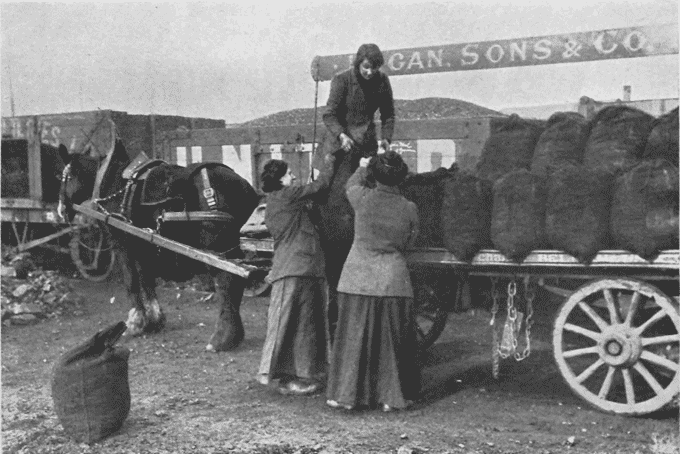| | Home | Resources | Schools Programme | Teachers | Site help | About us | Contact us | |
| You are here: Home > Resources >The Great War in Scotland > the Role of Women > Industry |
The Role of Women in IndustryAs increasing numbers of men left work to enlist in the forces, the Government set up a Central Advisory Committee for Women's Employment to plan and implement the recruitment of women to fill the gaps. Where possible, women were encouraged to act as substitute labour and take over the running of their husbands', brothers' or fathers' work. In time they were working in hospitals, on the land or in factories. Background to the impact of the Great War on Scotland. | ||||
Women creating shell cases at the Mons factory
| ||||
Producing armaments in GlasgowPrint a copy of the transcipt of the Goverment's report on the North British Locomotive Company, Rich Text format, 10KB, new window |
||||
Working in industryAs the war progressed, the Government realised that more had to be done to persuade employers to take on female labour to meet the growing demand for raw materials and 'articles of war'. In 1916, they published a booklet called Women's War Work designed to show that women could do a wide range of jobs previously done by men alone. Women loading coal sacks onto a horse-drawn cart
(National Records of Scotland reference: HH31/27/51/2) |
||||
Women driving a horse-drawn goods delivery vehicle
(National Records of Scotland reference: HH31/27/51/3) |
||||
Women working in the shipyard
|
||||
The Aberdeen Daily Journal, 7 March 1916Print a copy of the transcript of the Aberdeen Daily Journal entry, Rich Text format, 9KB, new window |
||||
The Effect of Industrial Employment of Women and GirlsIn 1916, the thirteenth meeting of the Central Advisory Committee for Women's Employment discussed a special report produced by Miss Anderson, the Principal Lady Inspector of Factories, on the effects of the second year of war on working women. ... The staff of Women Inspectors has been increased for such war work by 50 per cent... ... Reports vary from different parts of the country as to the extent to which Emergency Orders are used. ...As regards Scotland, most of the Orders for night shifts are for shell making and paper factories. ... The Inspectors are unanimous in speaking of the admirable spirit and natural skill widely shown by the women. 'What strikes one most in Scotland is the adaptability of the women.' 'Most satisfactory' is the common reply of employers questioned as to how far substitution has succeeded. ... In a certain part of Scotland women are being introduced for the first time into brickyards with considerable success, such employment being customary in other Scottish centres. ... A question arises - why has the manufacture of munitions of war on a terrible scale led at last to systematic introduction of hygienic safeguards that Factory Inspectors have advocated for many years, such as supervision of women by women in factories, provision of means of personal cleanliness, proper meal and rest rooms, and qualified nurses? Probably it is in part due to a recognition that wages alone cannot adequately reward those who serve the State in time of need, but it also points again to the new general awakening to the dependence of efficient output on the welfare of the human agent. (National Records of Scotland reference: HH31/27/47, pp13-14) |
||||
|
|